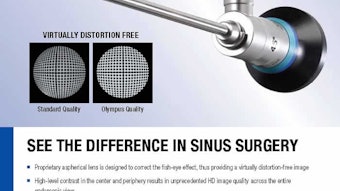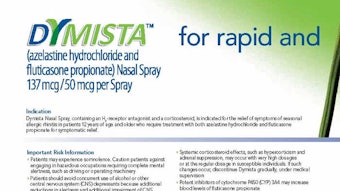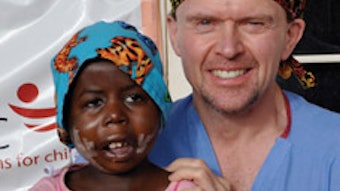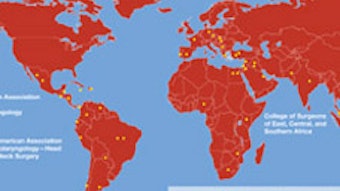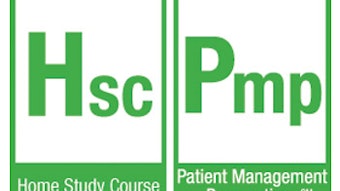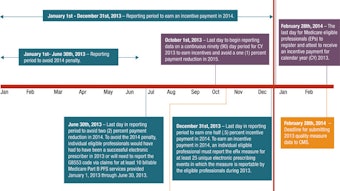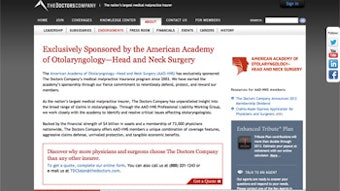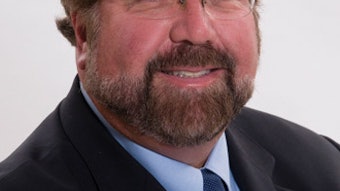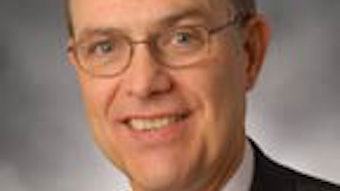AAO-HNSF 2013 Annual Meeting & OTO EXPOSM
Welcome! In its 117th year, the AAO-HNSF 2013 Annual Meeting & OTO EXPOSM provides the opportunity for thousands of Academy members, non-member physicians, allied health professionals, administrators, and exhibiting companies to convene. It draws more than 5,500 medical experts and professionals from around the world and features instruction courses, miniseminars, scientific oral presentations, honorary guest lectures, and numerous scientific posters. The 2013 annual meeting will take place in Vancouver, BC. Vancouver offers a winning combination of world-class hotels, meeting venues, and restaurants in a setting of spectacular beauty. Few convention cities offer such a wide range of cosmopolitan amenities in a downtown core that is safe, clean, pedestrian friendly, and stunning in its backdrop of mountains and ocean. Whether you’re an annual meeting veteran or a first-time attendee, attending one or more of the AAO-HNS/F activities will make the most of the meeting experience. • Maximize Your Membership—Get Involved with AAO-HNS/F 4:30–5:30 pm Saturday, September 28 This session will give you insights on how to maximize your membership in the AAO-HNS by taking advantage of all member benefits and opportunities to participate in AAO-HNS/F activities. These activities are designed to help you improve as a physician and a leader. Not an Academy member? Come to this session to learn about the value of Academy membership, meet key leaders, and ask questions of knowledgeable staff members. To learn more, visit www.entnet.org/getinvolved. • First-Time Attendees Orientation 5:30–6:30 pm Saturday, September 28 Learn what to expect and how to get the most out of your first AAO-HNSF Annual Meeting & OTO EXPOSM. This orientation is particularly important for all first-time attendees. However, even the most experienced AAO-HNSF meeting attendee can benefit. Learn how to maximize your annual meeting experience and how to organize your many ideas and activities so you can easily navigate your way around the meeting. • Career Fair-New this Year 6:00–8:00 pm Monday, September 30 This year’s most dynamic recruiting event, the AAO-HNSF Career Fair, is hosted by HEALTHeCAREERS Network. This evening event will take place on Monday at the Pan Pacific Hotel. The Healthcare Career Fair provides opportunities for candidates in all specialties and levels of training to speak face-to-face with hiring representatives onsite. Employers can leverage this opportunity to personally engage with numerous qualified job seekers at one time. • Instruction Course Tickets The Instruction Course sessions are one- or two-hour sessions that address current diagnostic, therapeutic, and practice management topics, presented by both Academy members and non-members. Early registration for Instruction Courses increases the possibility of receiving your first-choice selections and saves money. Instruction Course fees are $50 per hour, and $70 per hour for hands-on courses, if you register in advance. Fees will increase to $70 per hour and to $90 per hour for the hands-on courses after the August 23 advance registration deadline. Register online at www.entnet.org/annual_meeting. • Interactive Itinerary Planner Our itinerary planner grows more sophisticated each year, with new ways to design your schedule and customize your annual meeting experience. The education program will be available online. The revamped itinerary planner will allow you to search the education program by area of interest/track, date and time, and/or by program type. Networking opportunities such as alumni receptions will be searchable as well, along with the AAO-HNS/F committee meetings and other association events. • Session Recordings Selected sessions will be available for download. Orders may be placed during the registration process, onsite, or online following the conference. • OTO EXPOSM The practice of medicine extends beyond the exam room, and the OTO EXPO has nearly 300 companies that cater to every aspect of your practice—device manufacturers, pharmaceutical companies, collections, EMR systems, waiting room solutions, financial management firms, and more. Be sure to visit the OTO EXPO each day to see the best products and services our industry has to offer. Exhibits will be in Halls A-C of the Vancouver Convention Centre. The OTO EXPO will be open: Sunday, September 29 10:00 am–5:00 pm Monday, September 30 10:00 am–5:00 pm Tuesday, October 1 9:30 am–3:30 pm Wednesday, October 2 9:30 am–1:00 pm Children younger than 16 are not permitted in the Exhibit Hall. • ENT Careers Live! Employers and job seekers will have an opportunity to participate in ENT Careers Live!, our employment event, during the Annual Meeting & OTO EXPO. It will be located on the show floor in Hall B, Booth 448. Don’t miss this valuable networking opportunity. Visit ENT Careers, the trusted otolaryngology employment source, at www.healthecareers.com/aaohns to learn more. Networking Opportunities • Alumni Receptions 6:30–8:00 pm Tuesday, October 1 Experience the revitalized Alumni Receptions. This year’s alumni receptions have been enhanced to allow you to visit more easily with your friends and colleagues from other institutions, enjoy a lavish selection of regional Canadian morsels and treats, and be entertained by local talent. Visit www.entnet.org/annual_meeting frequently to see the latest list of Alumni Receptions. • International Reception(invitation only) 8:00–10:00 pm Tuesday, October 1 All registered international attendees and their spouses are invited to this reception, where President James L. Netterville, MD, will honor the delegates from our guest countries—Canada, Kenya, Nigeria, and Thailand. We encourage international guests to wear national dress. Attendees enjoy a variety of desserts and DJ with dancing. • Poster Presentation Breakfast 7:00–8:00 am Tuesday, October 1 This networking event will provide poster presenters an opportunity to interact and personally discuss their findings with annual meeting attendees. • President’s Reception 6:00–7:30 pm Sunday, September 29 The President’s Reception is open to all Annual Meeting & OTO EXPO attendees, including registered guests and exhibitors. A well-attended event, it takes place on the first evening of the annual meeting in honor of the outgoing president. Badges are mandatory. If your guest has not registered, please do so before attending any annual meeting event. • Women in Otolaryngology Section Luncheon/General Assembly 12:00–2:00 pm Monday, September 30 This year, the Women in Otolaryngology Section’s keynote luncheon speaker features Christina M. Surawicz, MD, MACG, professor of medicine, division of gastroenterology, University of Washington, Seattle. Dr. Surawicz will address attendees on Women and Leadership. This will be followed by the Section’s General Assembly meeting designed to facilitate the flow and exchange of creative ideas and mentoring opportunities. Space is limited and tickets are required. Education Program Overview The 2013 Annual Meeting & OTO EXPO program, developed by the AAO-HNSF 2013 Program Advisory Committee and the Instruction Course Advisory Committee, is made up of the following sessions: • Scientific Program The Scientific Program of the Annual Meeting & OTO EXPO is composed of scientific oral presentations, miniseminars, and scientific poster presentations. The scientific posters will be on display throughout the conference during the hours of registration. The scientific oral presentations and miniseminars are included in the price of a full conference registration and begin at 10:30 am on Sunday and from 8:00 am to noon Monday through Wednesday. • Instruction Courses Instruction Courses are presented by experts in the field of otolaryngology and other healthcare professionals. Education Offerings by Track Business of Medicine/Practice Management Facial Plastic and Reconstructive Surgery General Otolaryngology Head and Neck Surgery Laryngology/Broncho-Esophagology Otology/Neurotology Pediatric Otolaryngology Rhinology/Allergy Sleep Medicine Registration Information Register for the annual meeting and reserve your hotel room online atwww.entnet.org/annual_meeting. AAO-HNSF encourages all prospective attendees to register as soon as possible for the annual meeting to take advantage of reduced registration fees and to avoid waiting in lines onsite. Attendees can register online at www.entnet.org/annual_meeting until October 2, 2013. Registration must be completed by midnight, Eastern Daylight Time on July 12, to obtain the lowest discounted rate. Fees increase at 12:01 am Eastern Daylight Time on July 13. Your registration fee for the annual meeting includes the following: Access to all Scientific Sessions and Honorary Guest Lectures Entrance to the OTO EXPO The opportunity to review the latest scientific research in the poster area Access to complimentary shuttle service to and from most official AAO-HNSF hotels and the Vancouver Convention Centre Entrance to the Opening Ceremony and President’s Reception. Your registration fee for the annual meeting does not include the following ticketed events: Instruction Courses International Reception Ultrasound Workshop Otolaryngology Historical Society meeting Travel Information Every year, thousands of people visit Canada to attend conferences. We invite you to visit the Citizenship and Immigration Canada website at www.cic.gc.ca to obtain important information that will help you avoid problems that can affect your travel plans. Travel to Canada Checklist Make Sure you Have your Passport. Be sure the expiration date is after October 2013. U.S. citizens renew or request a new passport from the State Department at www.travel.state.gov. Determine your Eligibility. Find out if you qualify as a business visitor. Apply. Before you plan your visit, you should find out if you need a visa to enter Canada. If you do not need a visa to enter Canada, you will still need to meet some specific requirements. If you do need a visa, find out how to apply. Check Processing Times. Most applications for visitor visas (temporary resident visas) are processed within a few weeks or less. Processing times vary depending on the visa office. Prepare for Arrival. Be prepared and know what to expect when you arrive in Canada. Extend your Visa. To extend your stay in Canada, you should apply 30 days before your status expires. Bring a Guest to Canada. You can avoid problems or delays when you bring your foreign business guests to Canada by planning in advance. • Airport Located nearly 20 minutes from downtown Vancouver, Vancouver International Airport (YVR) is ranked as one of the top airports in the world and is served by a wide variety of local, national, and international air carriers with direct routes to most major destinations. Canada Border Services Agency (CBSA) is responsible for providing integrated border services and ensuring that all people entering Canada meet the requirements for entry. At YVR, CBSA officers are available around the clock, providing inspection services and promoting the free-flow of low-risk travelers, while enforcing laws and stopping potential threats. Entry Requirements. Find out what documents and identification are required for Canadians and non-Canadians returning to or entering Canada at www.cbsa.gc.ca. Currency Regulations. Carrying currency? Information for departing and arriving passengers about when and how to report currency to the CBSA can be found at www.cbsa-asfc.gc.ca. CANPASS Air. Learn more about this expedited program for pre-approved travelers at www.yvr.ca. • Conference Airport Shuttle AAO-HNSF will provide direct-to-airport service available from the Vancouver Convention Center on Wednesday, October 2 from 11:45 am to 4:15 pm with continuous departures every half hour. The cost for this direct service is $20, which includes luggage handling. Due to limited seating, you are strongly encouraged to make your reservation well in advance once you arrive at the Convention Center. Keep in mind that the Vancouver International Airport is approximately nine miles from the convention center, so allow yourself ample time before your flight. All reservations must be paid in cash (CAD or USD) onsite in Vancouver at the AAO-HNSF Shuttle Information Center located outside on Waterfront Road, Exhibit level, prior to your departure. Important Dates May 6 Registration Open July 12 Early Registration Rate Deadline August 23 Advance Registration Rate Deadline September 29-October 2 AAO-HNSF Annual Meeting & OTO EXPOSM Coming to Canada Cell Phone Use in Canada Attending the 2013 Annual Meeting & OTO EXPOSMfrom the U.S. or internationally? Take note: Roaming charges and data plan fees for cell phones (especially smartphones such as the iPhone or Android) and tablets such as the iPad can be costly, with prices spiking as high as several dollars per minute. Before catching your flight to Canada, contact your local cell phone carrier to get information about special pricing plans for calls, text messaging, and internet usage outside your home country. If you use a smartphone, ask your carrier about certain settings such as “airplane mode” that may help you save money on usage. Credit Cards Most major credit cards are accepted, but visitors are always advised to check with the vendor before a purchase is made. Cash machines with 24-hour access are available in many convenient locations throughout Greater Vancouver. Weather Warmed by Pacific Ocean currents and protected by a range of mountains, Vancouver enjoys mild temperatures year-round. September averages 65 degrees Fahrenheit (18 degrees Celsius). Electricity Outlets and voltage (110 volts) are the same as in the U.S. Small appliances such as hair dryers, irons, and razors, can be used in Canada. For those from other countries, adapters are required for electrical appliances. The frequency of electrical current in Canada is 60 Hz. Language Canada has two official languages: English and French. English is the predominant language in British Columbia. Vancouver is quite cosmopolitan and is a multicultural mix of many groups. Because of this, the city is considered multilingual on an unofficial level. Many banks, hotels, airline offices, service institutions, shops, and key tourist destinations have multilingual staff. After English and Chinese, the most common languages spoken are Punjabi, German, Italian, French, Tagalog (Filipino), and Spanish. Time Zone Most of British Columbia, including Vancouver, is in the Pacific Time Zone. During the annual meeting, Vancouver will be on Pacific Daylight Savings Time.
Welcome!
In its 117th year, the AAO-HNSF 2013 Annual Meeting & OTO EXPOSM provides the opportunity for thousands of Academy members, non-member physicians, allied health professionals, administrators, and exhibiting companies to convene. It draws more than 5,500 medical experts and professionals from around the world and features instruction courses, miniseminars, scientific oral presentations, honorary guest lectures, and numerous scientific posters.
The 2013 annual meeting will take place in Vancouver, BC. Vancouver offers a winning combination of world-class hotels, meeting venues, and restaurants in a setting of spectacular beauty. Few convention cities offer such a wide range of cosmopolitan amenities in a downtown core that is safe, clean, pedestrian friendly, and stunning in its backdrop of mountains and ocean.
Whether you’re an annual meeting veteran or a first-time attendee, attending one or more of the AAO-HNS/F activities will make the most of the meeting experience.
• Maximize Your Membership—Get Involved with AAO-HNS/F
4:30–5:30 pm Saturday, September 28
This session will give you insights on how to maximize your membership in the AAO-HNS by taking advantage of all member benefits and opportunities to participate in AAO-HNS/F activities. These activities are designed to help you improve as a physician and a leader. Not an Academy member? Come to this session to learn about the value of Academy membership, meet key leaders, and ask questions of knowledgeable staff members. To learn more, visit www.entnet.org/getinvolved.
• First-Time Attendees Orientation
5:30–6:30 pm Saturday, September 28
Learn what to expect and how to get the most out of your first AAO-HNSF Annual Meeting & OTO EXPOSM. This orientation is particularly important for all first-time attendees. However, even the most experienced AAO-HNSF meeting attendee can benefit. Learn how to maximize your annual meeting experience and how to organize your many ideas and activities so you can easily navigate your way around the meeting.
• Career Fair-New this Year
6:00–8:00 pm Monday, September 30
This year’s most dynamic recruiting event, the AAO-HNSF Career Fair, is hosted by HEALTHeCAREERS Network. This evening event will take place on Monday at the Pan Pacific Hotel. The Healthcare Career Fair provides opportunities for candidates in all specialties and levels of training to speak face-to-face with hiring representatives onsite. Employers can leverage this opportunity to personally engage with numerous qualified job seekers at one time.
• Instruction Course Tickets
The Instruction Course sessions are one- or two-hour sessions that address current diagnostic, therapeutic, and practice management topics, presented by both Academy members and non-members. Early registration for Instruction Courses increases the possibility of receiving your first-choice selections and saves money. Instruction Course fees are $50 per hour, and $70 per hour for hands-on courses, if you register in advance. Fees will increase to $70 per hour and to $90 per hour for the hands-on courses after the August 23 advance registration deadline. Register online at www.entnet.org/annual_meeting.
• Interactive Itinerary Planner
Our itinerary planner grows more sophisticated each year, with new ways to design your schedule and customize your annual meeting experience. The education program will be available online. The revamped itinerary planner will allow you to search the education program by area of interest/track, date and time, and/or by program type. Networking opportunities such as alumni receptions will be searchable as well, along with the AAO-HNS/F committee meetings and other association events.
• Session Recordings
Selected sessions will be available for download. Orders may be placed during the registration process, onsite, or online following the conference.
• OTO EXPOSM
The practice of medicine extends beyond the exam room, and the OTO EXPO has nearly 300 companies that cater to every aspect of your practice—device manufacturers, pharmaceutical companies, collections, EMR systems, waiting room solutions, financial management firms, and more. Be sure to visit the OTO EXPO each day to see the best products and services our industry has to offer. Exhibits will be in Halls A-C of the Vancouver Convention Centre.
The OTO EXPO will be open:
- Sunday, September 29
10:00 am–5:00 pm - Monday, September 30
10:00 am–5:00 pm - Tuesday, October 1
9:30 am–3:30 pm - Wednesday, October 2
9:30 am–1:00 pm
Children younger than 16 are not permitted in the Exhibit Hall.
• ENT Careers Live!
Employers and job seekers will have an opportunity to participate in ENT Careers Live!, our employment event, during the Annual Meeting & OTO EXPO. It will be located on the show floor in Hall B, Booth 448. Don’t miss this valuable networking opportunity. Visit ENT Careers, the trusted otolaryngology employment source, at www.healthecareers.com/aaohns to learn more.
Networking Opportunities
• Alumni Receptions
6:30–8:00 pm Tuesday, October 1
Experience the revitalized Alumni Receptions. This year’s alumni receptions have been enhanced to allow you to visit more easily with your friends and colleagues from other institutions, enjoy a lavish selection of regional Canadian morsels and treats, and be entertained by local talent. Visit www.entnet.org/annual_meeting frequently to see the latest list of Alumni Receptions.
• International Reception(invitation only)
8:00–10:00 pm Tuesday, October 1
All registered international attendees and their spouses are invited to this reception, where President James L. Netterville, MD, will honor the delegates from our guest countries—Canada, Kenya, Nigeria, and Thailand. We encourage international guests to wear national dress. Attendees enjoy a variety of desserts and DJ with dancing.
• Poster Presentation Breakfast
7:00–8:00 am Tuesday, October 1
This networking event will provide poster presenters an opportunity to interact and personally discuss their findings with annual meeting attendees.
• President’s Reception
6:00–7:30 pm Sunday, September 29
The President’s Reception is open to all Annual Meeting & OTO EXPO attendees, including registered guests and exhibitors. A well-attended event, it takes place on the first evening of the annual meeting in honor of the outgoing president. Badges are mandatory. If your guest has not registered, please do so before attending any annual meeting event.
• Women in Otolaryngology Section Luncheon/General Assembly
12:00–2:00 pm Monday, September 30
This year, the Women in Otolaryngology Section’s keynote luncheon speaker features Christina M. Surawicz, MD, MACG, professor of medicine, division of gastroenterology, University of Washington, Seattle. Dr. Surawicz will address attendees on Women and Leadership. This will be followed by the Section’s General Assembly meeting designed to facilitate the flow and exchange of creative ideas and mentoring opportunities. Space is limited and tickets are required.
Education Program Overview
The 2013 Annual Meeting & OTO EXPO program, developed by the AAO-HNSF 2013 Program Advisory Committee and the Instruction Course Advisory Committee, is made up of the following sessions:
• Scientific Program
The Scientific Program of the Annual Meeting & OTO EXPO is composed of scientific oral presentations, miniseminars, and scientific poster presentations. The scientific posters will be on display throughout the conference during the hours of registration. The scientific oral presentations and miniseminars are included in the price of a full conference registration and begin at 10:30 am on Sunday and from 8:00 am to noon Monday through Wednesday.
• Instruction Courses
Instruction Courses are presented by experts in the field of otolaryngology and other healthcare professionals.
Education Offerings by Track
- Business of Medicine/Practice Management
- Facial Plastic and Reconstructive Surgery
- General Otolaryngology
- Head and Neck Surgery
- Laryngology/Broncho-Esophagology
- Otology/Neurotology
- Pediatric Otolaryngology
- Rhinology/Allergy
- Sleep Medicine
Registration Information
Register for the annual meeting and reserve your hotel room online atwww.entnet.org/annual_meeting.
AAO-HNSF encourages all prospective attendees to register as soon as possible for the annual meeting to take advantage of reduced registration fees and to avoid waiting in lines onsite. Attendees can register online at www.entnet.org/annual_meeting until October 2, 2013.
Registration must be completed by midnight, Eastern Daylight Time on July 12, to obtain the lowest discounted rate. Fees increase at 12:01 am Eastern Daylight Time on July 13.
Your registration fee for the annual meeting includes the following:
- Access to all Scientific Sessions and Honorary Guest Lectures
- Entrance to the OTO EXPO
- The opportunity to review the latest scientific research in the poster area
- Access to complimentary shuttle service to and from most official AAO-HNSF hotels and the Vancouver Convention Centre
- Entrance to the Opening Ceremony and President’s Reception.
Your registration fee for the annual meeting does not include the following ticketed events:
- Instruction Courses
- International Reception
- Ultrasound Workshop
- Otolaryngology Historical Society meeting
Travel Information
Every year, thousands of people visit Canada to attend conferences. We invite you to visit the Citizenship and Immigration Canada website at www.cic.gc.ca to obtain important information that will help you avoid problems that can affect your travel plans.
Travel to Canada Checklist
- Make Sure you Have your Passport. Be sure the expiration date is after October 2013. U.S. citizens renew or request a new passport from the State Department at www.travel.state.gov.
- Determine your Eligibility. Find out if you qualify as a business visitor.
- Apply. Before you plan your visit, you should find out if you need a visa to enter Canada. If you do not need a visa to enter Canada, you will still need to meet some specific requirements. If you do need a visa, find out how to apply.
- Check Processing Times. Most applications for visitor visas (temporary resident visas) are processed within a few weeks or less. Processing times vary depending on the visa office.
- Prepare for Arrival. Be prepared and know what to expect when you arrive in Canada.
- Extend your Visa. To extend your stay in Canada, you should apply 30 days before your status expires.
- Bring a Guest to Canada. You can avoid problems or delays when you bring your foreign business guests to Canada by planning in advance.
• Airport
Located nearly 20 minutes from downtown Vancouver, Vancouver International Airport (YVR) is ranked as one of the top airports in the world and is served by a wide variety of local, national, and international air carriers with direct routes to most major destinations.
Canada Border Services Agency (CBSA) is responsible for providing integrated border services and ensuring that all people entering Canada meet the requirements for entry. At YVR, CBSA officers are available around the clock, providing inspection services and promoting the free-flow of low-risk travelers, while enforcing laws and stopping potential threats.
Entry Requirements. Find out what documents and identification are required for Canadians and non-Canadians returning to or entering Canada at www.cbsa.gc.ca.
Currency Regulations. Carrying currency? Information for departing and arriving passengers about when and how to report currency to the CBSA can be found at www.cbsa-asfc.gc.ca.
CANPASS Air. Learn more about this expedited program for pre-approved travelers at www.yvr.ca.
• Conference Airport Shuttle
AAO-HNSF will provide direct-to-airport service available from the Vancouver Convention Center on Wednesday, October 2 from 11:45 am to 4:15 pm with continuous departures every half hour. The cost for this direct service is $20, which includes luggage handling. Due to limited seating, you are strongly encouraged to make your reservation well in advance once you arrive at the Convention Center. Keep in mind that the Vancouver International Airport is approximately nine miles from the convention center, so allow yourself ample time before your flight. All reservations must be paid in cash (CAD or USD) onsite in Vancouver at the AAO-HNSF Shuttle Information Center located outside on Waterfront Road, Exhibit level, prior to your departure.
Important Dates
- May 6 Registration Open
- July 12 Early Registration Rate Deadline
- August 23 Advance Registration Rate Deadline
- September 29-October 2 AAO-HNSF Annual Meeting & OTO EXPOSM
Coming to Canada
Cell Phone Use in Canada
Attending the 2013 Annual Meeting & OTO EXPOSMfrom the U.S. or internationally? Take note: Roaming charges and data plan fees for cell phones (especially smartphones such as the iPhone or Android) and tablets such as the iPad can be costly, with prices spiking as high as several dollars per minute.
Before catching your flight to Canada, contact your local cell phone carrier to get information about special pricing plans for calls, text messaging, and internet usage outside your home country. If you use a smartphone, ask your carrier about certain settings such as “airplane mode” that may help you save money on usage.
Credit Cards
Most major credit cards are accepted, but visitors are always advised to check with the vendor before a purchase is made. Cash machines with 24-hour access are available in many convenient locations throughout Greater Vancouver.
Weather
Warmed by Pacific Ocean currents and protected by a range of mountains, Vancouver enjoys mild temperatures year-round. September averages 65 degrees Fahrenheit (18 degrees Celsius).
Electricity
Outlets and voltage (110 volts) are the same as in the U.S. Small appliances such as hair dryers, irons, and razors, can be used in Canada. For those from other countries, adapters are required for electrical appliances. The frequency of electrical current in Canada is 60 Hz.
Language
Canada has two official languages: English and French. English is the predominant language in British Columbia. Vancouver is quite cosmopolitan and is a multicultural mix of many groups. Because of this, the city is considered multilingual on an unofficial level. Many banks, hotels, airline offices, service institutions, shops, and key tourist destinations have multilingual staff. After English and Chinese, the most common languages spoken are Punjabi, German, Italian, French, Tagalog (Filipino), and Spanish.
Time Zone
Most of British Columbia, including Vancouver, is in the Pacific Time Zone. During the annual meeting, Vancouver will be on Pacific Daylight Savings Time.
